
A, or a, is the first letter and the first vowel letter of the Latin alphabet, used in the modern English alphabet, and others worldwide. Its name in English is a, plural aes.
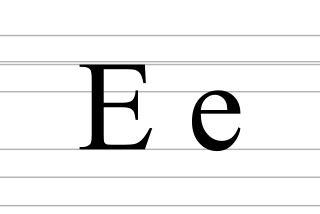
E, or e, is the fifth letter and the second vowel letter of the Latin alphabet, used in the modern English alphabet, the alphabets of other western European languages and others worldwide. Its name in English is e ; plural es, Es or E's.

F, or f, is the sixth letter of the Latin alphabet and many modern alphabets influenced by it, including the modern English alphabet and the alphabets of all other modern western European languages. Its name in English is ef, and the plural is efs.

H, or h, is the eighth letter of the Latin alphabet, used in the modern English alphabet, including the alphabets of other western European languages and others worldwide. Its name in English is aitch, or regionally haitch, plural haitches.
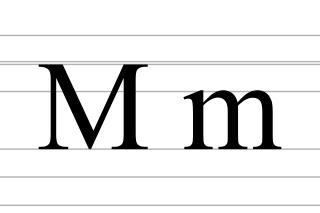
M, or m, is the thirteenth letter of the Latin alphabet, used in the modern English alphabet, the alphabets of several western European languages and others worldwide. Its name in English is em, plural ems.
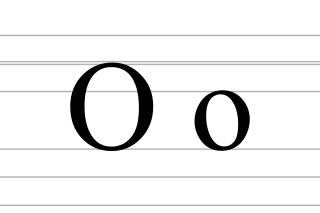
O, or o, is the fifteenth letter and the fourth vowel letter of the Latin alphabet, used in the modern English alphabet, the alphabets of other western European languages and others worldwide. Its name in English is o, plural oes.

T, or t, is the twentieth letter of the Latin alphabet, used in the modern English alphabet, the alphabets of other western European languages and others worldwide. Its name in English is tee, plural tees.
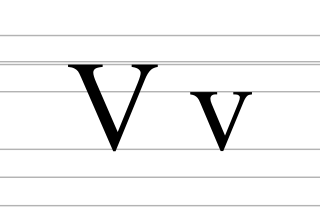
V, or v, is the twenty-second letter of the Latin alphabet, used in the modern English alphabet, the alphabets of other western European languages and others worldwide. Its name in English is vee, plural vees.
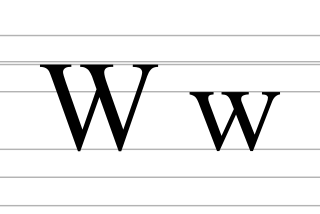
W, or w, is the twenty-third letter of the Latin alphabet, used in the modern English alphabet, the alphabets of other western European languages and others worldwide. Its name in English is double-u, plural double-ues.

Y, or y, is the twenty-fifth and penultimate letter of the Latin alphabet, used in the modern English alphabet, the alphabets of other western European languages and others worldwide. According to some authorities, it is the sixth vowel letter of the English alphabet. Its name in English is wye, plural wyes.
In the polytonic orthography of Ancient Greek, the rough breathing character is a diacritical mark used to indicate the presence of an sound before a vowel, diphthong, or after rho. It remained in the polytonic orthography even after the Hellenistic period, when the sound disappeared from the Greek language. In the monotonic orthography of Modern Greek phonology, in use since 1982, it is not used at all.

Æ is a character formed from the letters a and e, originally a ligature representing the Latin diphthong ae. It has been promoted to the status of a letter in some languages, including Danish, Norwegian, Icelandic, and Faroese. It was also used in Old Swedish before being changed to ä. It was also used in Ossetian before switched back to its Cyrillic counterpart. The modern International Phonetic Alphabet uses it to represent the near-open front unrounded vowel. Diacritic variants include Ǣ/ǣ, Ǽ/ǽ, Æ̀/æ̀, Æ̂/æ̂ and Æ̃/æ̃.
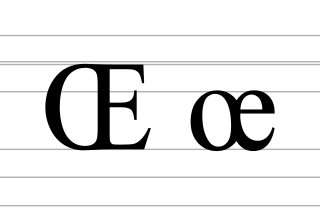
Œ is a Latin alphabet grapheme, a ligature of o and e. In medieval and early modern Latin, it was used in borrowings from Greek that originally contained the diphthong οι, and in a few non-Greek words. These usages continue in English and French. In French, the words that were borrowed from Latin and contained the Latin diphthong written as œ now generally have é or è; but œ is still used in some non-learned French words, representing open-mid front rounded vowels, such as œil ("eye") and sœur ("sister").
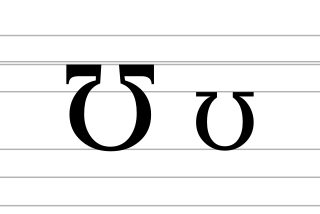
The letter Ʊ, called horseshoe or sometimes bucket, inverted omega or Latin upsilon, is a letter of the International Phonetic Alphabet used to transcribe a near-close near-back rounded vowel. Graphically, the lower case is a turned small-capital Greek letter omega (Ω) in many typefaces, and historically it derives from a small-capital Latin U (ᴜ), with the serifs exaggerated to make them more visible. However, Geoffrey Pullum interpreted it as an IPA variant of the Greek letter upsilon (υ) and called it Latin upsilon, the name that would be adopted by Unicode, though in IPA an actual Greek upsilon is also used for the voiced labiodental approximant; Pullum called this letter script V and Unicode calls it V with hook.
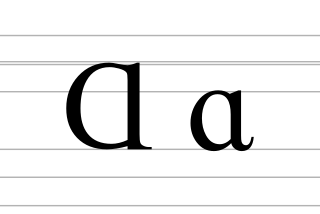
Latin alpha, script a, or single-story a is a letter of the Latin alphabet based on one lowercase form of a, or on the Greek lowercase alpha (α).
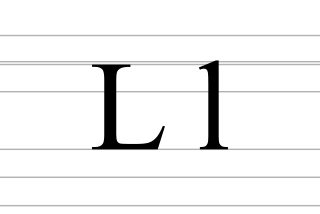
L, or l, is the twelfth letter of the Latin alphabet, used in the modern English alphabet, the alphabets of other western European languages and others worldwide. Its name in English is el, plural els.
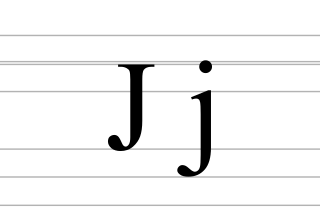
J, or j, is the tenth letter of the Latin alphabet, used in the modern English alphabet, the alphabets of other western European languages and others worldwide. Its usual name in English is jay, with a now-uncommon variant jy.
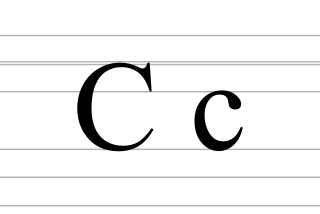
C, or c, is the third letter of the Latin alphabet, used in the modern English alphabet, the alphabets of other western European languages and others worldwide. Its name in English is cee, plural cees.
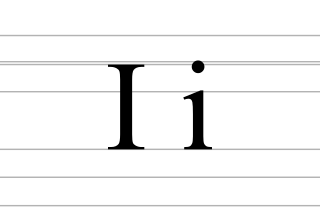
I, or i, is the ninth letter and the third vowel letter of the Latin alphabet, used in the modern English alphabet, the alphabets of other western European languages and others worldwide. Its name in English is i, plural ies.
Inverted breve or arch is a diacritical mark, shaped like the top half of a circle ( ̑ ), that is, like an upside-down breve (˘). It looks similar to the circumflex (ˆ), which has a sharp tip, while the inverted breve is rounded:.
























